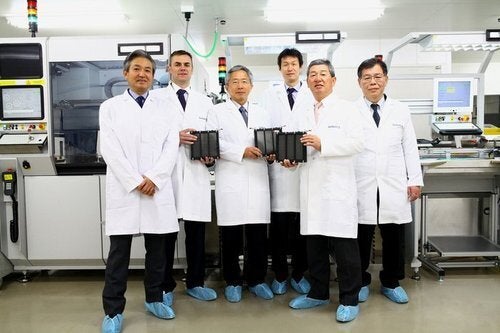It has been a busy year for hydrogen Fuel Cell Electric Vehicles (FCEVs) with significant progress being made both in the UK and globally. No longer perceived as a futuristic dream but a viable reality, various governments and key players within the automotive industry are spurring initiatives into life, setting the trend for imminent developments and industry investment that will bring FCEVs to our roads sooner than you might think.
So what has changed? With ever-tightening EU and global policies on carbon emissions, it is clear why there has been a growing interest in highly efficient and low carbon FCEVs. Unlike Battery Electric Vehicles (BEVs), which suffer from limited range and take longer to re-fuel, FCEVS offer practical zero-emission motoring without compromising on performance and range. And because both BEVs and FCEVs share the same underlying drivetrain, car manufacturers who have invested heavily in their electric vehicle platforms can upgrade to a fuel cell electric vehicle without completely "reinventing the wheel".
Everyday life with FCEVs will prove more familiar than you might think. Drivers won't have to make significant changes to their refuelling behaviour, using a similar 'nozzle-to-car' method as they do now. The similarities don't end there either: An 'at-pump' refuel will take only a few minutes, compared to the extended periods required to recharge battery-only vehicles, and crucially you won't have to fill up again for several hundred miles!
So if we're going to fill our cars with hydrogen, where will we get it? Here in the UK, Transport Minister Norman Baker launched HM Government's "Driving the future today - A strategy for ultra low emission vehicles in the UK" on September 4th. This Government strategy pledged an additional £500 million new capital investment between 2015 and 2020 on top of the existing £400 million budget, to help support the development and adoption of Ultra Low Emission Vehicles (ULEVs) in the UK. This investment includes grant funding to support the implementation of a hydrogen refuelling station network.
This year in Germany, it was announced that, starting from 2015, the industry-led "H2 Mobility" action plan aims to provide 400 hydrogen fuel filling stations across the country by 2023, representing an overall investment of around €350 million. California's state government showed similar commitment this September with the signing of Assembly Bill 8. This bill includes a specific target for hydrogen fuel supply, setting aside roughly $20 million a year to fund at least 100 refuelling stations through to the end of 2023 as part of $2 billion funds assigned to clean-vehicle incentives. Combine these developments with work underway in Japan, Korea, France and Scandinavia, and recent developments in Japan that enable the transportation of large amounts of hydrogen by sea, and it is clear that plans to implement hydrogen refuelling infrastructure are now global in scale.
In July, the NEW-IG (New Energy World Industry Grouping), a European industrial association representing a major part of Europe's hydrogen and fuel cell industry, welcomed the European Commission's proposal to renew and strengthen the €1bn+ Fuel Cells and Hydrogen (FCH) Joint Undertaking. This proposal heralded a strengthened public-private partnership to expand the use of clean and efficient technologies in transport and energy generation under the EU's Horizon 2020 programme. As a 'joint sector' program, it combines technology development with investment in jobs, economic competitiveness and energy efficiency in Europe.
Last, but not least, where are the cars? ¬They are on the way. At this year's Tokyo Motor Show, Toyota unveiled its concept FCEV and promised a mass-produced version that will go on sale in Japan in 2015, followed by a US launch the following year. Hyundai Motors said it plans to start selling a mass-produced fuel cell Sport Utility Vehicle (SUV) in the US in 2014. Meanwhile, Honda recently débuted its FCEV concept at the LA Motor Show with plans to make its first sales in the US in 2015, followed by Japan and then Europe.

Automotive manufacturers operate on a huge scale with an ecosystem of specialist suppliers. Amongst their many challenges, bringing FCEVs to market requires making fuel cell systems production-ready for true mass manufacture. In February, SMILE FC System Corporation (a joint venture between Intelligent Energy and Suzuki Motor Corporation) established a ready-to-scale production plant for its fuel cell systems in Yokohama, Japan - the next stage in the preparation for high volume production of fuel cell systems.
So FCEVS are ready to roll off the production lines with major automotive manufacturers publicly announcing launch dates, the hydrogen refuelling infrastructure is taking shape with industry and government joining up to implement networks across the globe - all of which means practical zero-emission motoring is coming to a road near you, and sooner than you might think.